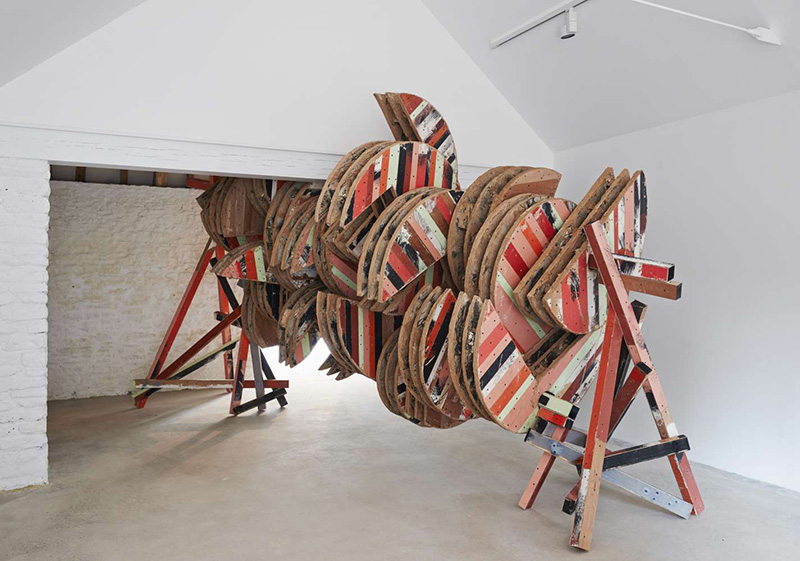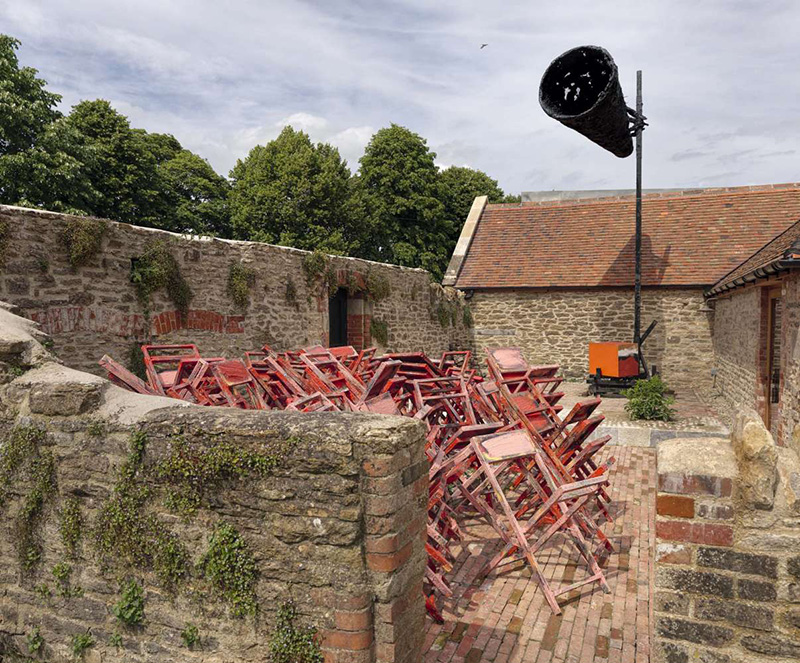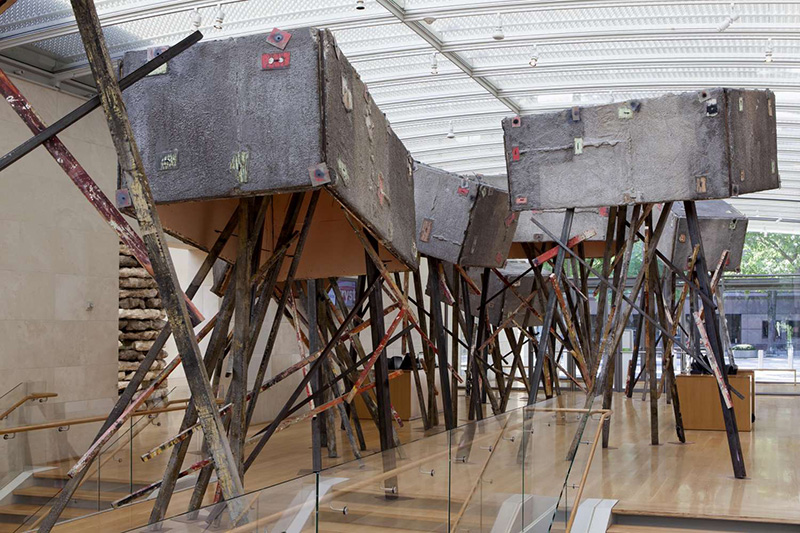ART CITIES:Zurich-Phyllida Barlow
 Phyllida Barlow’s work questions the nature and role of the sculptural object in contemporary culture, utilising an extensive, fluid vocabulary and immense enthusiasm for engaging with the physical ‘stuff’ of the world. She creates new relationships, experimenting with unexpected combinations of materials creating objects and environments, which encourage us to see the everyday world with fresh eyes.
Phyllida Barlow’s work questions the nature and role of the sculptural object in contemporary culture, utilising an extensive, fluid vocabulary and immense enthusiasm for engaging with the physical ‘stuff’ of the world. She creates new relationships, experimenting with unexpected combinations of materials creating objects and environments, which encourage us to see the everyday world with fresh eyes.
By Dimitris Lempesis
Photo: Kunsthalle Zürich Archive
Phyllida Barlow’s solo exhibition is titled “demo”, such as demo-lition, demo-cracy, or demo-nstration. Under the guidance of the artist, two massive sculptural interventions have been installed at Kunsthalle Zürich. The exhibition starts on the second floor with a sculpture that occupies three spaces and demands downright “physical” attention: We must be careful not to trip while trying to look up at the ceiling constantly. Here, now, sculpture becomes palpable: how it functions, how it unfolds in front of the viewer while he or she moves around it (and withdraws again), how it plays with the architecture, contradicting and competing against it. Everything changes on the third floor. In it there is an object, perhaps a stage, a platform, a sculpture, from where visitors are invited to look through tubular holes in the walls onto another sculpture, made of ruined wall elements, torn-down isolation material, and bent and twisted aluminum columns. This apocalyptic landscape and heavyweight sculpture, inaccessible beyond the offered glimpses, is nevertheless exposed in a different way: directly behind it the outside walls are currently being torn out and rebuilt as part of the building’s refurbishment. Phyllida Barlow has had a strange and unique career up to now, her first exhibition was held at the Institute of Contemporary Arts in London in 1965. Throughout the following 50 years, Barlow created an extensive oeuvre, which with few exceptions, has not survived, and will largely remain inaccessible forever. Today Barlow’s work is widely recognized, collected and appreciated, a recognition, which, however, only started about ten years ago. The reasons for this art-historically unique situation are manifold. Many of Barlow’s sculptures could not be kept due to their size and material nature, due to lack of storage space and money, and the absence of collectors. This only changed after 2000, when institutions, curators, collectors and gallerists started to look more closely at her work and were ready to assess and discuss its seemingly contradictory nature. Phyllida Barlow will represent Great Britain at the Venice Biennale 2017.
Info: Kunsthalle Zürich, Limmatstrasse 270, Zurich, Duration: 29/10/16-19/2/17, Days & Hours: Tue-Wed & Fri 11:00-18:00, Thu 11:00-20:00, Sat-Sun 10:00-17:00, http://kunsthallezurich.ch






